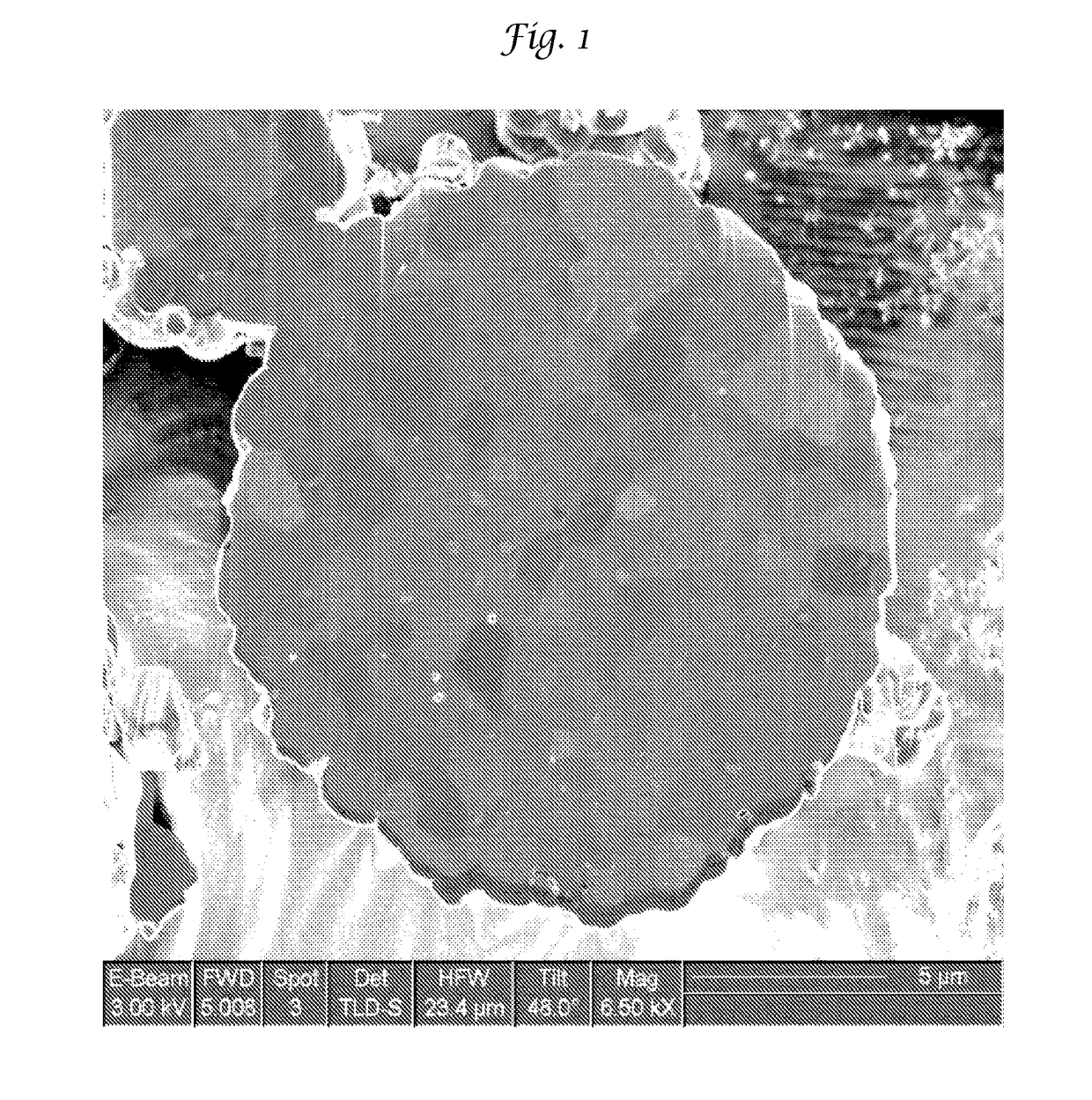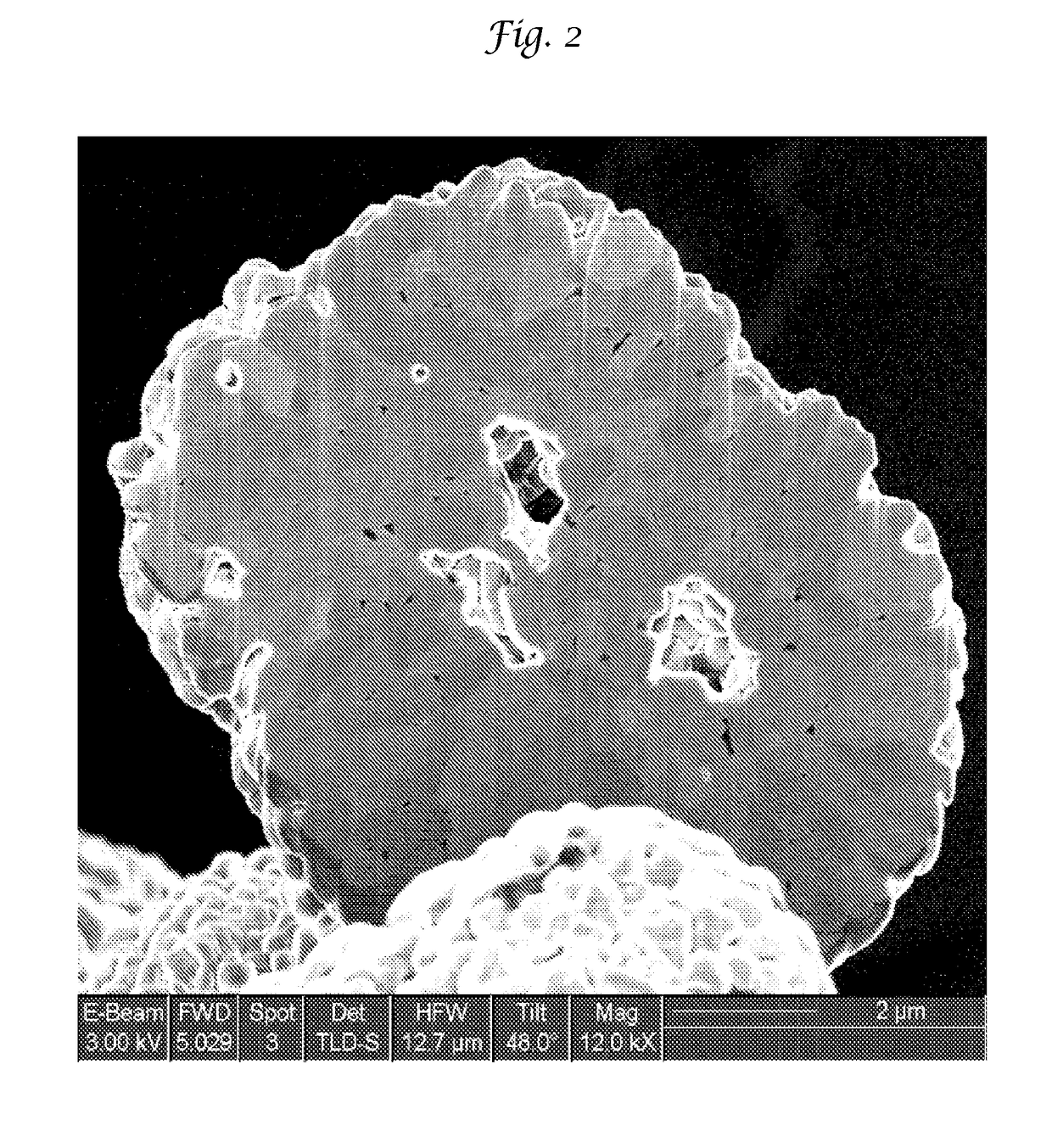Improved lithium metal oxide cathode materials and method to make them
a lithium metal oxide and cathode material technology, applied in the direction of cell components, electrochemical generators, nickel compounds, etc., can solve the problems of inability to meet the requirements of continuous stirred reactors, inconvenient solid-state synthesis methods, and inconsistencies in battery performance from one battery or cell to another, so as to improve the safety, improve the cyclability, and improve the effect of energy density
- Summary
- Abstract
- Description
- Claims
- Application Information
AI Technical Summary
Benefits of technology
Problems solved by technology
Method used
Image
Examples
examples
[0094]The raw materials used to make the LMOs are shown in Table 1. The water used was deionized water.
examples 1-8
and Comp. Examples 1-5
[0095]The LMO of Examples 1-8 and Comparative Examples 1-5 were made to a bulk chemistry of LiNi0.5Mn0.3Co0.2O2. Each of these Examples used the same raw materials in the same proportion necessary to make this NMC except that an excess of Li was used in an amount of 1.1. The particulate precursors used were Li2CO3, Ni(OH)2, Mn2O3 and Co3O4. The particular Ni(OH)2 and Co3O4 are shown in Table 1 and are used interchangeably.
[0096]All of the particulate precursors were mixed simultaneously in water at a solids loading of about 50% by weight. In addition to the water, 2% by weight of polyacrylic acid was also used to mix all the precursors. The mixture was milled in a Micromedia Bead Mill (MM-P1, Buhler Inc. Mahwah, N.J.) loaded with 0.2 to 0 3 mm diameter yittrium stabilized zirconia media (Sigmund Lindner, Germany. SiLibeads® Type ZY premium quality). The mill was run at a power of 4 KW / hour and milled for a sufficient time to realize the primary particle size as...
examples 14-17
[0112]In these Examples the LMO was made in the same manner as Example 1, except that the precursor containing Mn (i.e., Mn2O3) was milled separately from the other precursor particulates and later mixed to form a slurry with all of the precursor particulates having a solids loading of about 45%.
[0113]The Mn precursor slurry had a solids loading of 45% and was milled for a time to realize the particulate size shown in Table 5. These examples were also heated to 950° C. for 3 hours with a ramp rate of 8 hours up and down to the final temperature. The milling and other procedures were essentially the same as in Example 1.
[0114]From Table 5, it is readily apparent that the size of the Mn precursor may be larger than the precursor containing Ni and Co and still achieve an LMO having good EC performance and ease of processing while also allowing for good safety as shown by the Mn / Ni surface ratio as well as evolved oxygen. This surprising result allows for more robust commercial manufact...
PUM
| Property | Measurement | Unit |
|---|---|---|
| particle size | aaaaa | aaaaa |
| particle size | aaaaa | aaaaa |
| particle size | aaaaa | aaaaa |
Abstract
Description
Claims
Application Information
 Login to View More
Login to View More - R&D
- Intellectual Property
- Life Sciences
- Materials
- Tech Scout
- Unparalleled Data Quality
- Higher Quality Content
- 60% Fewer Hallucinations
Browse by: Latest US Patents, China's latest patents, Technical Efficacy Thesaurus, Application Domain, Technology Topic, Popular Technical Reports.
© 2025 PatSnap. All rights reserved.Legal|Privacy policy|Modern Slavery Act Transparency Statement|Sitemap|About US| Contact US: help@patsnap.com


